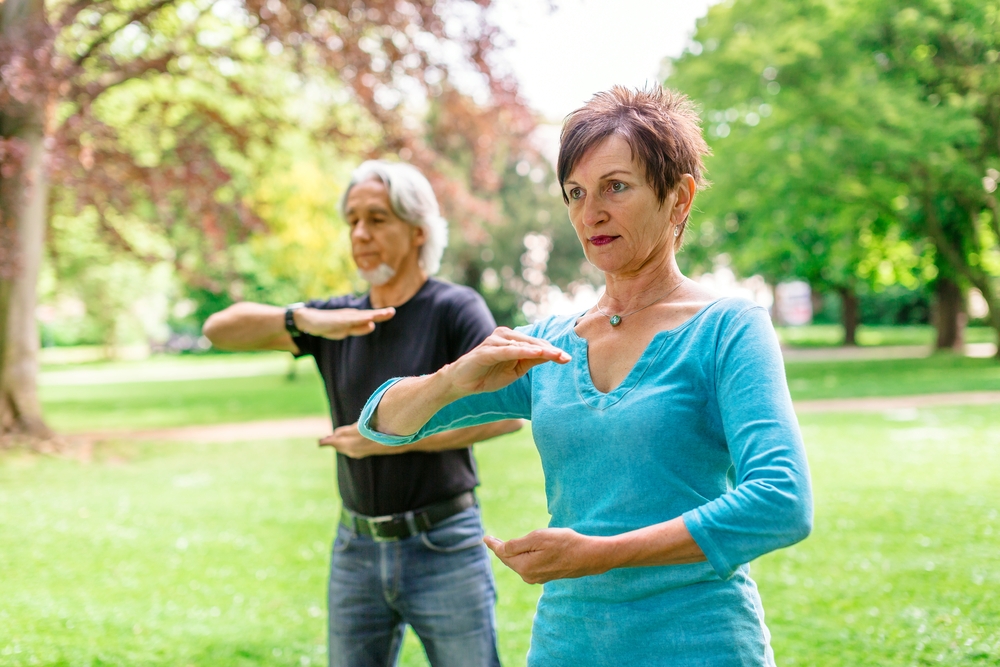Yoga Decreases Anxiety and Depression More Than Resistance Training, Study Finds

Mindfulness yoga seems to be better than conventional exercise at alleviating depression and anxiety in people with Parkinson’s disease, according to a recent study.
The study with that finding, which was published in the journal JAMA Neurology, is titled, “Effects of Mindfulness Yoga vs Stretching and Resistance Training Exercises on Anxiety and Depression for People With Parkinson Disease.”
It’s well-established that exercising regularly has a multitude of health benefits for people with Parkinson’s. Exercising also is known to have psychological benefits, particularly when a mindfulness component is incorporated.
In the study, the mental health effects of mindfulness yoga and more conventional stretching and resistance training exercises were compared head-to-head.
Researchers recruited 138 adults with Parkinson’s disease at four community rehabilitation centers in Hong Kong, between Dec. 1, 2016, and May 31, 2017. All patients had a clinical diagnosis of idiopathic (of unknown cause) Parkinson’s disease and were able to stand unaided and walk with or without an assistive device.
Individuals were assigned randomly to participate in mindfulness yoga (71 people) or resistance exercises (67 people). A slim majority (52.9%) of the participants were female, the average participant age was 63.6 years, and both groups were similar in terms of demographics, etc., although slightly more in the yoga group were less educated and lived at home.
The Parkinson’s Disease News Today forums are a place to connect with other patients, share tips and talk about the latest research. Check them out today!
Both interventions consisted of weekly classes offered once per week, with participants encouraged to practice at home, too. Average attendance rates for the eight-week intervention were 6.1 classes for both groups, and about three-quarters of participants in both groups reported actually practicing at home. Over the course of the study, some participants dropped out for reasons that included disinterest and scheduling conflicts; dropout rates were comparable between the two groups.
Before and after the intervention, depression and anxiety were measured using the Hospital Anxiety and Depression Scale.
In the yoga group, anxiety scores decreased from 6.32 before the intervention to 3.04 afterward; this decrease was significantly larger than the decrease seen in the resistance exercise group (5.66 to 4.95). Similarly, depression scores in the yoga group decreased significantly more than those in the conventional exercise group (6.69 to 3.53 vs. 6.16 to 6.00).
Motor skills also were assessed (via the MDS-UPDRS), and similar improvements were observed in both groups: a decrease from 34.90 to 22.41 in the yoga group, and from 31.64 to 23.25 in the resistance exercise group. Of note, higher MDS-UPDRS scores reflect worse motor capacity.
The data suggest that, while both interventions provide comparable physical benefits, the mental health benefits of mindfulness yoga are superior to those of stretching and resistance training exercises.
A few instances of mild knee pain in both groups were the only adverse side effects reported; these were resolved without medical intervention.
“These findings suggest that mindfulness yoga is an effective treatment option for patients with [Parkinson’s disease] to manage stress and symptoms,” the researchers concluded in their paper, adding that “[f]uture rehabilitation programs could consider integrating mindfulness skills into physical therapy to enhance the holistic well-being of people with neurodegenerative conditions.”
Limitations of this study include the small sample size and the fact that participants were fully aware of which group they were put into, so it’s possible that participant bias may have influenced the results.






